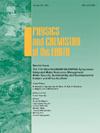Drought susceptibility prediction using novel hybridized methods based on reliability of drought and non-drought samples
IF 3
3区 地球科学
Q2 GEOSCIENCES, MULTIDISCIPLINARY
引用次数: 0
Abstract
Agricultural droughts are a periodic phenomenon in many regions of the word. Reducing damages to crops from drought events requires increasing the precision of agricultural drought mapping and making forecasts. However, there are very few studies that employ cutting-edge ensemble learning methods to estimate the risk of agricultural drought. In order to strengthen predictions of agricultural drought risk in a systematically explicit manner, we propose and evaluate ensemble models grounded on the credal decision tree (CDT) with Decorate (CDT-Decorate) supervised learning approaches as a case study in Iran. In the Esfahan Province of Iran, a thorough evaluation of the possibility of agricultural drought was conducted. This assessment coupled the five risk components—vulnerability, hazard, exposure, and mitigation—with the parameters that were suitable. Eighteen drought conditioning factors were identified and used to build both the training and validation datasets. A number of evaluation measures that showed the ensemble model's capacity to explain the underlying spatial pattern of agricultural drought events within the research area and forecast the likelihood of future drought phenomena that were used to validate the models. Area Under the Receiver Operating Characteristic Curve (AUCROC) showed that the ensemble CDT-Decorate model was better than the CDT model (AUCROC = 0.755) because it had an AUCROC value of 0.962. When assessing the risk of agricultural drought, the most important elements are population density, land usage, land cover, and distance to the river. The center region, with its intermediate risk (17 %), has a significant disruption of human agricultural activities; the southern region, with its very high risk (16 %), should receive the greatest attention due to its high susceptibility, significant hazardousness, and limited mitigation capability. An analysis of the models' e performances revealed that the ensemble model offered a trustworthy assessment of the risks associated with agricultural drought, and the risk maps it produced are suitable for drought mitigation techniques in the agricultural sector and could be applied in other drought-prone areas.
基于干旱和非干旱样本可靠性的新型杂交方法的干旱敏感性预测
农业干旱是世界上许多地区的周期性现象。减少干旱事件对作物的损害需要提高农业干旱制图和预测的精度。然而,很少有研究采用先进的集成学习方法来估计农业干旱的风险。为了以系统明确的方式加强对农业干旱风险的预测,我们提出并评估了基于信用决策树(CDT)和装饰(CDT-装饰)监督学习方法的集成模型,并以伊朗为例进行了研究。在伊朗的伊斯法罕省,对农业干旱的可能性进行了彻底的评估。该评估将五个风险组成部分(脆弱性、危害、暴露和缓解)与合适的参数相结合。确定了18个干旱调节因子,并将其用于建立训练和验证数据集。若干评价指标显示了集合模型解释研究区内农业干旱事件的潜在空间格局和预测未来干旱现象可能性的能力,并用于验证模型的有效性。Receiver Operating Characteristic Curve (AUCROC) Area Under the Receiver Operating Characteristic Curve (AUCROC)显示,集合CDT- decoration模型的AUCROC值为0.962,优于CDT模型(AUCROC = 0.755)。在评估农业干旱风险时,最重要的因素是人口密度、土地利用、土地覆盖和到河流的距离。中部地区风险中等(17%),人类农业活动受到严重干扰;南部地区的风险非常高(16%),由于其高易感性、显著危险性和有限的缓解能力,应得到最大的关注。对模型性能的分析表明,集成模型对与农业干旱相关的风险提供了可靠的评估,其生成的风险图适用于农业部门的干旱缓解技术,并可应用于其他干旱易发地区。
本文章由计算机程序翻译,如有差异,请以英文原文为准。
求助全文
约1分钟内获得全文
求助全文
来源期刊

Physics and Chemistry of the Earth
地学-地球科学综合
CiteScore
5.40
自引率
2.70%
发文量
176
审稿时长
31.6 weeks
期刊介绍:
Physics and Chemistry of the Earth is an international interdisciplinary journal for the rapid publication of collections of refereed communications in separate thematic issues, either stemming from scientific meetings, or, especially compiled for the occasion. There is no restriction on the length of articles published in the journal. Physics and Chemistry of the Earth incorporates the separate Parts A, B and C which existed until the end of 2001.
Please note: the Editors are unable to consider submissions that are not invited or linked to a thematic issue. Please do not submit unsolicited papers.
The journal covers the following subject areas:
-Solid Earth and Geodesy:
(geology, geochemistry, tectonophysics, seismology, volcanology, palaeomagnetism and rock magnetism, electromagnetism and potential fields, marine and environmental geosciences as well as geodesy).
-Hydrology, Oceans and Atmosphere:
(hydrology and water resources research, engineering and management, oceanography and oceanic chemistry, shelf, sea, lake and river sciences, meteorology and atmospheric sciences incl. chemistry as well as climatology and glaciology).
-Solar-Terrestrial and Planetary Science:
(solar, heliospheric and solar-planetary sciences, geology, geophysics and atmospheric sciences of planets, satellites and small bodies as well as cosmochemistry and exobiology).
 求助内容:
求助内容: 应助结果提醒方式:
应助结果提醒方式:


